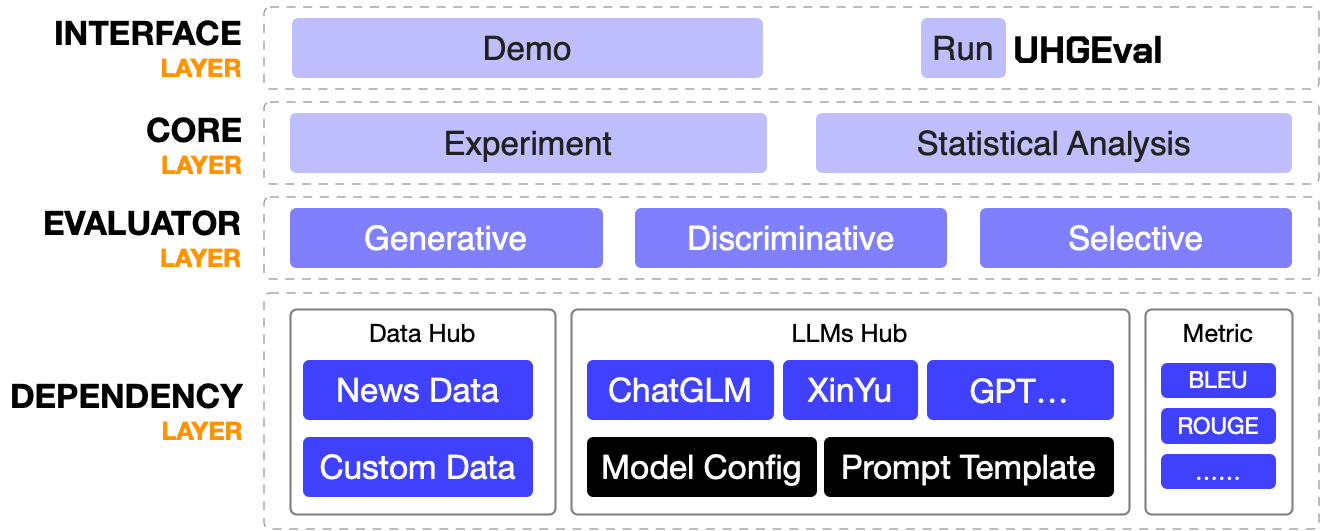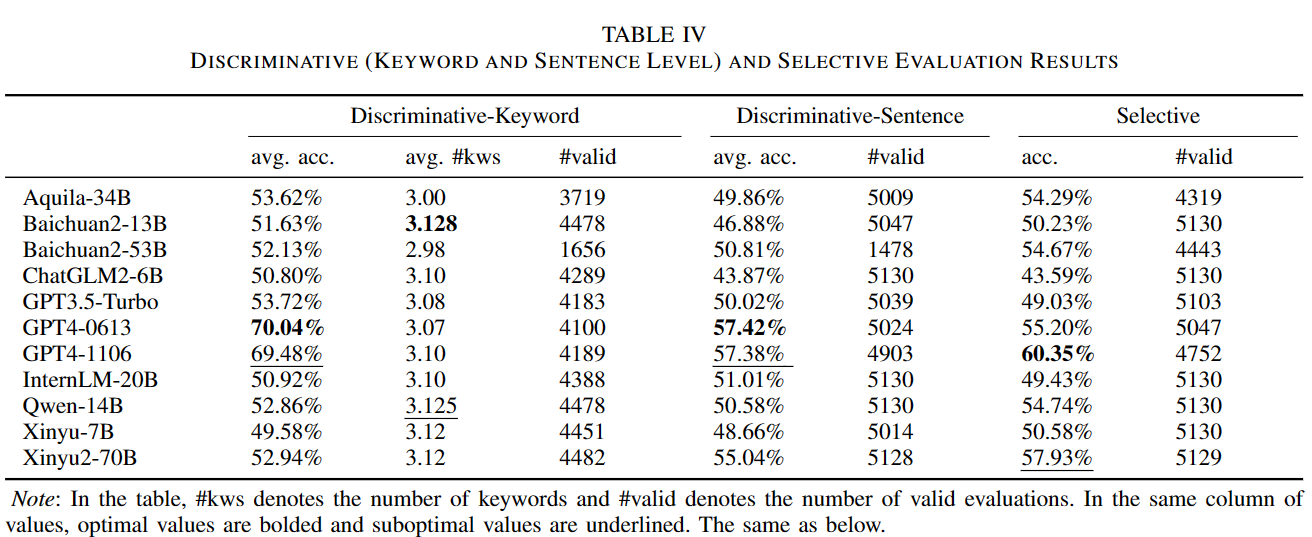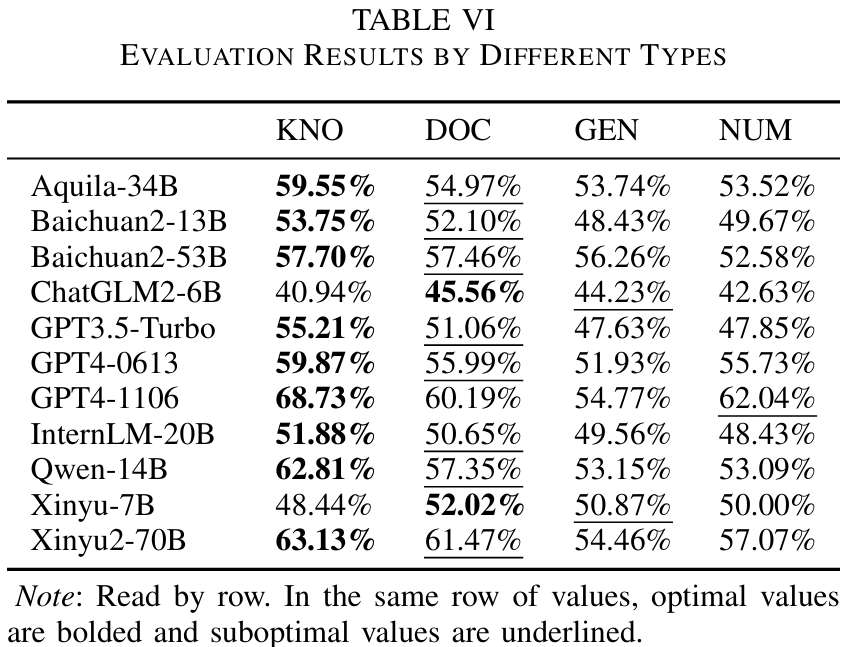

- Introduction
- Project Structure
- Quick Start
- Advanced Usage
- Customization Guideline
- Results for Experiment-20231117
- Contributions
- TODOs
- CITATION
Benchmarking the Hallucination of Chinese Large Language Models via Unconstrained Generation
- Safety: Ensuring the security of experimental data is of utmost importance.
- Flexibility: Easily expandable, with all modules replaceable.
The project contains multiple folders and multiple Python script files. Here are the introductions of them.
- data: This folder comprises the datasets used for evaluation. Currently, it only includes the XinhuaHallucinations dataset. You can add your own dataset here.
- logs: This folder is used to store logs, warnings, errors, information, etc., such as token costs, network connection problems, incorrect responses, etc.
- output: This folder is used to store the results of the evaluation.
- statistics: This folder is used to store summary results of multiple experiments.
- tests: This folder includes scripts to run unit testing.
- uhgeval: This folder contains the core components of this project. We provide a more detailed introduction below.
The files contained in this folder ensure that the project runs properly. Here we will explain their respective roles.
- configs: This folder comprises scripts used to initialize the loading parameters of the model. There are lots of strings in this script. The string can be an API, a URL, or a local path, depending on your way of loading.
- dataset: This folder contains scripts used to load the dataset. Currently, it only includes the script for loading the XinhuaHallucinations dataset. You can add your own loading script here.
- evaluator: This folder includes scripts used to perform the evaluation tasks. Here we provide scripts for performing discriminative, generative, and selective evaluation tasks. You can also design your evaluation scripts inconsistent with the existing scripts.
- metric: This folder contains scripts used to define the metrics of the evaluation. Such as precision, bert_score, etc. You devise your own metric or load metric from huggingface.
- llm: This folder comprises scripts used to load LLM and defines methods for interacting with models. You can add your llm here.
- prompts: This folder contains some Txt files used as few-shots prompts when interacting with llm.
- core: This folder includes the core scripts of this project. We design analyst.py for analyzing experimental data and save it as CSV files. We also design experiment.py to run experiments with multiple language models and evaluators on a given dataset.
Get started quickly with a 20-line demo program.
- UHGEval requires Python>=3.10.0
pip install -r requirements.txt- Take
uhgeval/configs/example_config.pyas an example, createuhgeval/configs/real_config.pyand add configs of models you want to evaluate to this script. - Run
demo.py
Utilize run_uhgeval.py or run_uhgeval_future.py for a comprehensive understanding of this project. The former is currently a provisional piece of code slated for removal in the future; whereas the latter is command-line executable code intended for future use. Both scripts will perform a complete evaluation process using the GPT model.
Our project can be customized to your needs. Here are some guidelines to tell you how to carry out this process.
- If you want to add a new dataset to this project, you should first add the dataset files like
UHGEval/data/dataset_name/A.json. Then, add the script used to load this dataset likeUHGEval/uhgeval/dataset/loadyourdataset.py. - If you want to add a new model to be evaluated, you should first confirm the load method of this model and then add it to the corresponding location. For example, if this model is an API-type model, you're supposed to add it like
UHGEval/uhgeval/llm/api.py. - If you want to design your own metric, you should add it in
UHGEval/uhgeval/metric/common.py. - If you want to devise a new evaluator, you should first add it like
UHGEval/uhgeval/evaluator/your_evaluator.py. Please make sure this script is consistent with thebase.py. Then you need to add the method for interacting with models inUHGEval/uhgeval/llm/base.py. Don't forget to add prompt files likeUHGEval/uhgeval/prompts/your_prompts.txt
The original experimental results are in ./archived_experiments/20231117.
Although we have conducted thorough automatic annotation and manual verification, there may still be errors or imperfections in our XinhuaHallucinations dataset with over 5000 data points. We encourage you to raise issues or submit pull requests to assist us in improving the consistency of the dataset. You may also receive corresponding recognition and rewards for your contributions.
Click me to show all TODOs
- llm, metric: enable loading from HuggingFace
- config: utilize conifg to realize convenient experiment
- TruthfulQA: add new dataset and corresponding evaluators
- another repo: creation pipeline of dataset
- contribution: OpenCompass
@article{UHGEval,
title={UHGEval: Benchmarking the Hallucination of Chinese Large Language Models via Unconstrained Generation},
author={Xun Liang and Shichao Song and Simin Niu and Zhiyu Li and Feiyu Xiong and Bo Tang and Zhaohui Wy and Dawei He and Peng Cheng and Zhonghao Wang and Haiying Deng},
journal={arXiv preprint arXiv:2311.15296},
year={2023},
}


